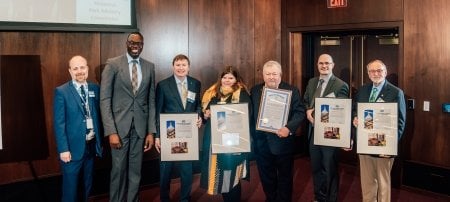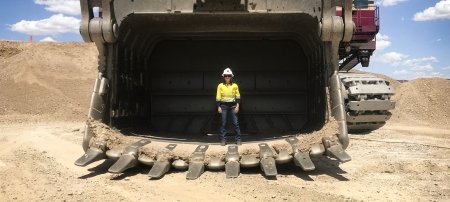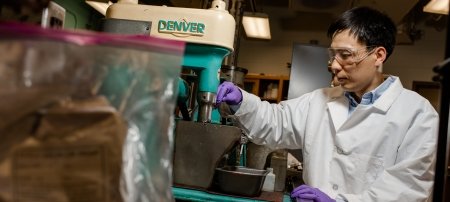Archaeology Tours at the Cliff Mine, Clifton

The public is welcome to free tours of the 2013 archaeological dig at the historic Cliff Mine and Clifton town site on the weekends of June 15-16, 22-23 and 29-30.
The tours are led by faculty and students in Michigan Technological University’s industrial archaeology program. The tours leave from the east end of Cliff Drive, about one mile from the small town of Phoenix, near the junction with US-41. Tours start at 10 a.m. and begin about every 30 minutes. The last one will begin at 3:30 p.m.
The team will provide maps with self-guided trails for people who wish to explore on their own. “We’re cutting new paths through the woods this week and will put historic photos and maps around to help people see the site,” said project co-director Sam Sweitz. “We will point people to hikes with various levels of difficulty, so people can go and see the cemeteries or climb 300 feet to the top of the cliff if they wish.”
For several years, Michigan Tech archaeologists have focused their studies on the Cliff Mine. This year, they are primarily excavating in the ruins of the nearby town of Clifton, exposing the remains of a building they think was constructed in the 1850s. Graduate student Lee Presley, who has been studying the site, believes it was used to slaughter and butcher animals to feed the residents of the nearby boarding houses. The dig is part of her larger study of how food systems developed in the Keweenaw during the 19th century to support the growing population of people and animals on the mining frontier.
Researchers have also been studying the South Cliff Stamp Mill. Like the main stamp mill, which Michigan Tech’s archaeologists excavated in 2011 and 2012, the South Cliff Mill seems to be well preserved. Visitors will be able to see features of the mill that the archaeologists have mapped and hear about the results of the preliminary testing at the site.
The research team has also started some new mapping surveys. After four years of mapping the mineshafts, industrial and residential buildings, poor rock piles, roads and other features, the computer database allows archaeologists to make precise comparisons between the ruins and historic maps and photos. This summer, the research teams have started to map other clues to the history of the landscape, such as the remnants of cultivated plants like the pink heirloom roses, lilacs and apple and pear trees, along with other cultivars.
“We’d like to be able to look at the map of rose bushes, for example, and see how the different plants overlap with residential buildings,” said project co-director Timothy Scarlett. “Today, are the roses only growing around large houses? Or were they also planted in the communities where people lived in log cabins? Are lilacs growing only around buildings where people were living in the early 20th century? These questions will help us understand how the landscape appeared when people were walking the streets of Clifton.”
The research is undertaken with permission of the Keweenaw County Road Commission. The project is supported by private gifts to the Michigan Tech Fund and grants from the Keweenaw National Historical Park Advisory Commission and the Department of Social Sciences at Michigan Tech.
Michigan Technological University is an R1 public research university founded in 1885 in Houghton, and is home to nearly 7,500 students from more than 60 countries around the world. Consistently ranked among the best universities in the country for return on investment, Michigan's flagship technological university offers more than 185 undergraduate and graduate degree programs in science and technology, engineering, computing, forestry, business, health professions, humanities, mathematics, social sciences, and the arts. The rural campus is situated just miles from Lake Superior in Michigan's Upper Peninsula, offering year-round opportunities for outdoor adventure.




Comments